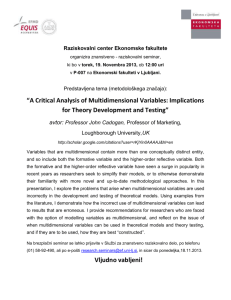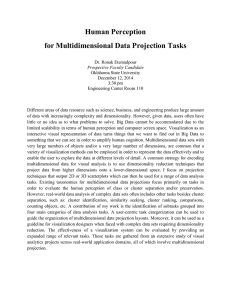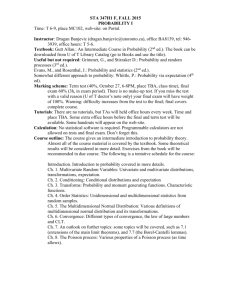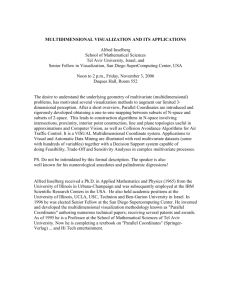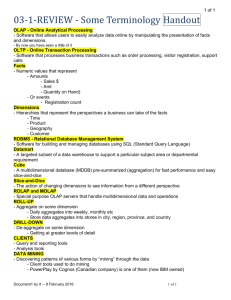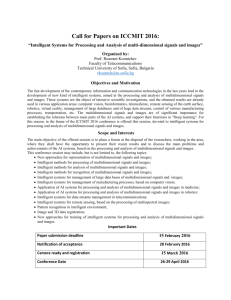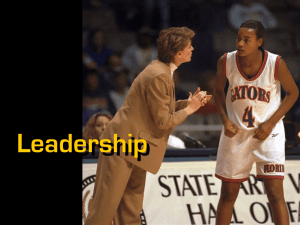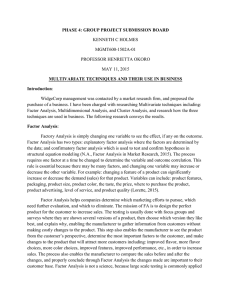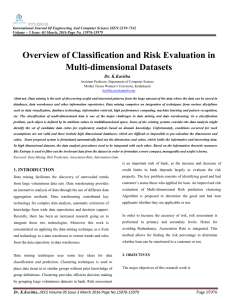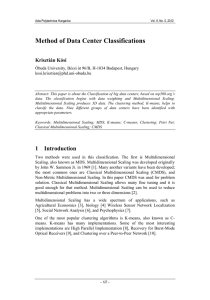PPT
advertisement
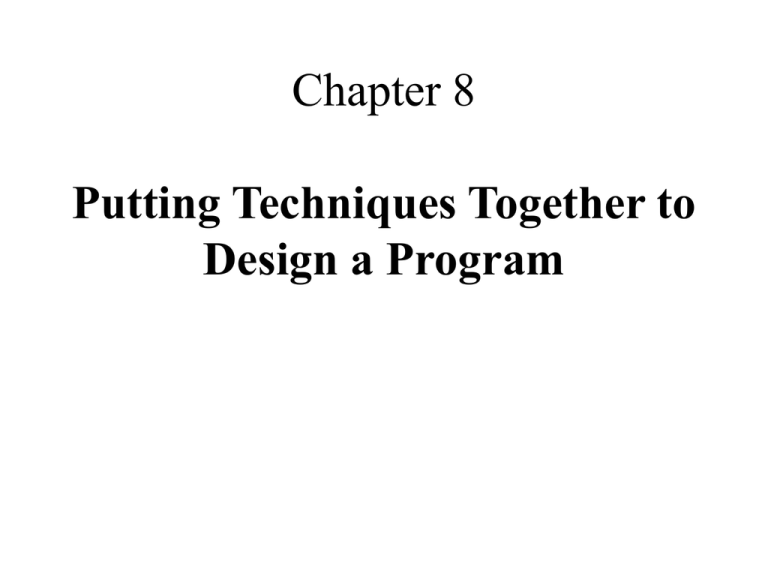
Chapter 8 Putting Techniques Together to Design a Program Combining Techniques for a Behavior Change Program • treatment programs are often more effective when they address several dimensions of a problem • multidimensional approaches concurrently focus treatments on different elements of antecedents, behavior, and consequences • problem CERs are often dealt with using both operant and respondent procedures Combining Techniques for a Behavior Change Program (continued) • self-management programs are served well by applying a multidimensional approach Identifying Possible Techniques to Use • conduct a functional analysis • determine whether the behavior problem is maintained by operant control, respondent control, or a combination of both • determine whether the problem involves a behavioral excess or deficit • use brainstorming techniques to generate possible therapy solutions Multidimensional Programs: Azrin's CommunityReinforcement Approach Azrin's community-reinforcement approach to treat alcoholism is an example of a broad, communitybased, multidimensional program • aversion conditioning is used to suppress drinking • reinforcement is used to maintain treatment • relaxation training helps reduce stress • cognitive training is used to teach how to refuse drinks Multidimensional Programs: Rasing and Duker's Social Skills Program Rasing and Duker's multidimensional program improved social skills of deaf children • prompting encouraged appropriate social behavior • verbal and modeled instruction guided behavior • feedback and reinforcement followed behavior Multidimensional Programs: Dahlquist and Gil's Dental Program Dahlquist and Gil's multidimensional program improved dental flossing • prompts reminded children to floss • self-monitoring was used to provide feedback about behavior • praise and tangible reinforcers were provided for appropriate responses What Makes a Behavior Change Program Good? • begin with a good functional analysis • generate appropriate treatments for each problem • clearly specify target behaviors and all contingencies • involve client as an active participant • provide training for anyone assisting in treatment What Makes a Behavior Change Program Good? (continued) • insure accuracy of data collection • use data to provide feedback to client and anyone assisting in treatment • modify treatment if goals are not being met • introduce procedures to insure generalization • maximize client commitment to the program Deciding Which Techniques to Use • choose procedures that are most effective for the problem addressed • evaluate the practicality (or cost per benefit) of the treatment • use aversive control procedures as a last resort • scrutinize ethics of treatment procedures • evaluate drawbacks of procedures Motivational Factors to Consider • those who are more motivated to change tend to be more successful in changing • evaluate motivation using the Scale of Motivation to Change Behavior • seek methods to enhance motivation to change Readiness to Change stages of change model suggests five levels of motivation for change: • precontemplation involves minimal consideration of change • contemplation involves some thought about a problem and the possibility of change but no commitment to immediate change • preparation involves a more concrete commitment Readiness to Change (continued) • action involves active pursuit of the change • maintenance involves activities to sustain change Enhancing Motivation: Realistic Expectations • one should have realistic expectations about treatment procedures, goals, and what it will take to succeed • understand that lapses are possible but that they can be overcome • develop and apply methods that can be used to resist temptation • establish rule-release procedures early on to allow occasional planned outs Enhancing Motivation: Sense of Commitment one must have a sense of commitment to change • develop both written and verbal commitment statements • list long- and short-term advantages and disadvantages of change • invest significant time or money into the change program Enhancing Motivation: Social Support social support can increase motivation and commitment • encourage pairs or groups with similar behavior problems to work together • provide a consultant Behavioral Contracts behavioral contracts are agreements that clearly specify target behaviors, monitoring procedures, goals, and treatment procedures • contracts should be signed by the person who will change and by a mediator • loopholes should be anticipated • rule-release procedures should be clearly defined Behavioral Contracts (continued) • contracts should be negotiated, not imposed • responsibilities of all parties should be negotiated and made clear Tips on Designing a Program • techniques should address behavior, antecedents, and consequences • develop separate programs for each target behavior • use at least six but usually no more than ten intervention techniques • confirm the accuracy of data, preferably by having an independent observer Tips on Designing a Program (continued) • early on, immediately reinforce every instance of behavior • vary consequences to maintain strength • reinforce self-management exercises • make programs cost-effective • identify responsibilities of all involved and conduct periodic review
